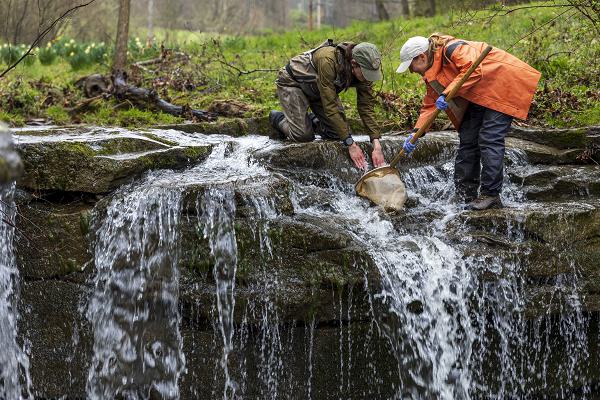
Saltsburg, Pennsylvania. (May 5, 2024) Most Americans don’t know what an enormous impact the U.S. Army Corps of Engineers has on the quality of the water they drink. In this photo by Michel Sauret, Andi Fitzgibbon, a water quality biologist with the Corps of Engineers Pittsburgh District, works alongside Jamie Detweiler, an aquatic biologist with the Pennsylvania Department of Environmental Protection, to collect biological samples to evaluate water quality.
Under Section 10 of the Rivers and Harbors Act of 1899, Congress created the Corps of Engineers to approve the construction of any structure in or over any the navigable water of the United States. This role was expanded by Section 404 of the Clean Water Act to include navigable waters, lakes, ponds, small streams, some ditches, and adjacent wetlands. They also govern waters of the United States that are man-made such as dams.
Currently, the Army Corps of Engineers is responsible for stewardship of about twelve million acres of project lands that include more than 450,000 acres of environmentally sensitive areas supporting unique ecosystems. The Corps also manages over 340 species of concern and over 47,000 cultural sites across the nation.
The Corps also plays a major role in restoring damaged ecosystems by teaming up with local environmental officials to provide funding and experts. Under the Aquatic Ecosystem Restoration program, the Corps of Engineers participates in the planning, engineering, and construction of projects to restore degraded aquatic ecosystems. The agency has a $224 million dollar budget to support cost-effect restoration efforts by local entities to restore and save vital water resources.
While most Americans may not realize it, their next glass of water will be clean thanks to the Army Corps of Engineers.


